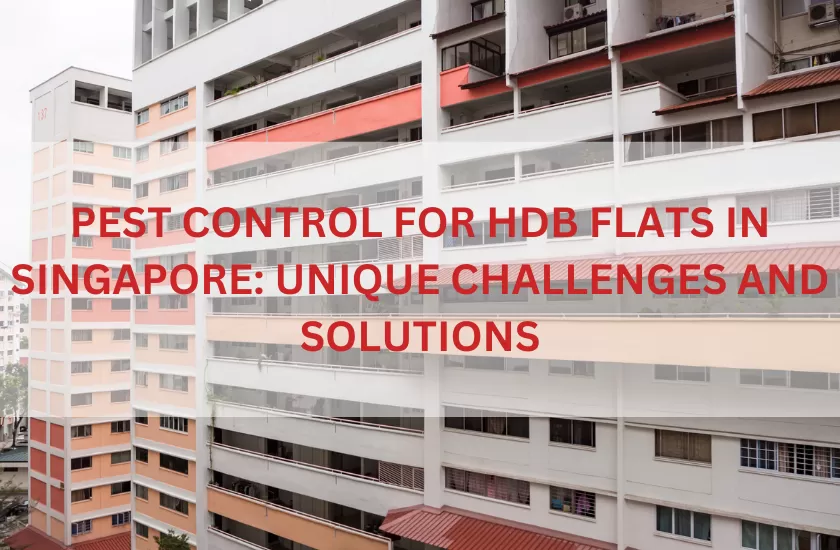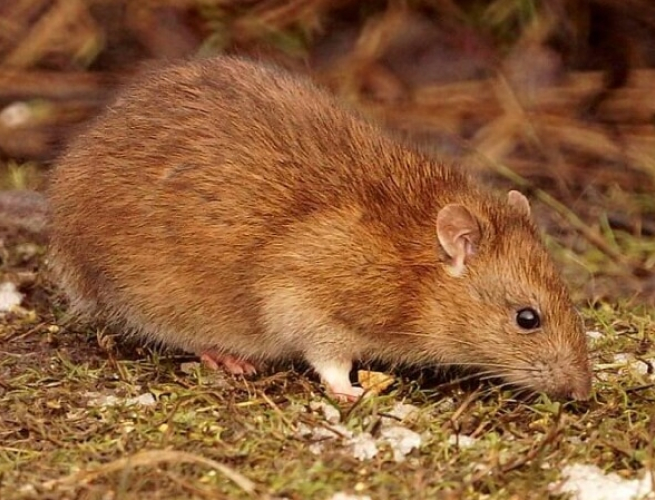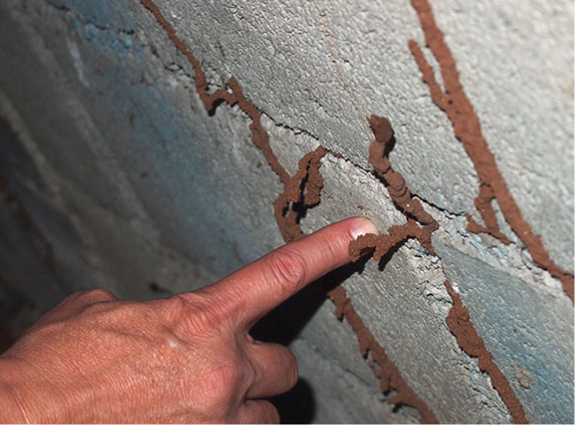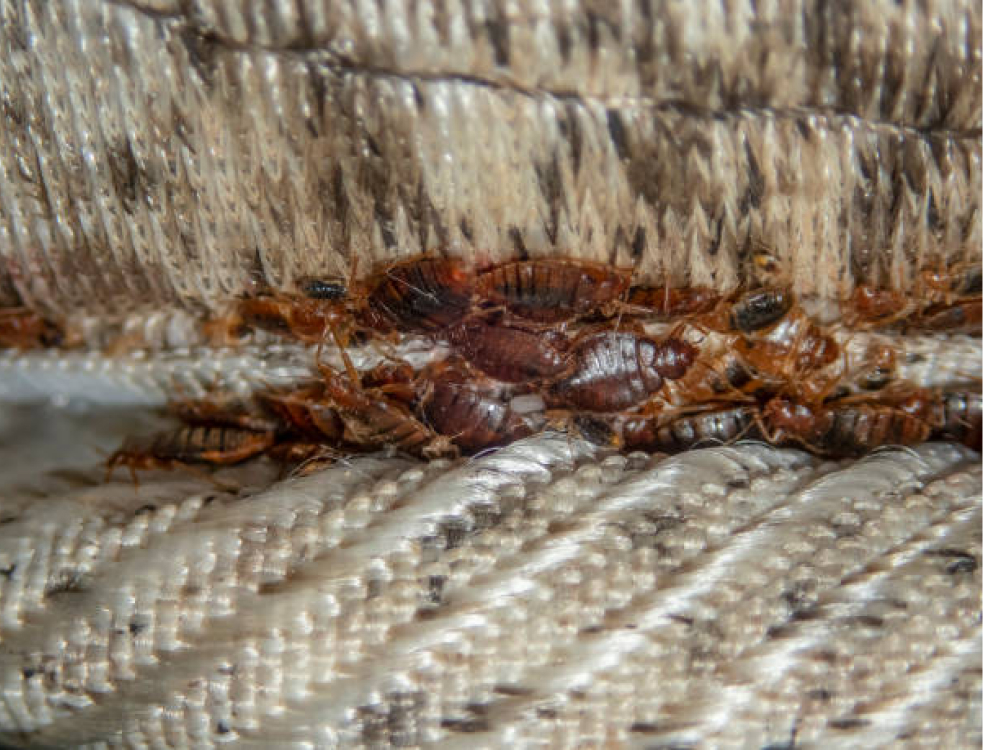Singapore’s Housing and Development Board (HDB) flats are home to over 80% of the population, playing a crucial role in the country’s urban planning. These high-rise, densely populated residential buildings present unique challenges when it comes to pest control. Factors such as shared spaces, food handling practices, environmental conditions, and the tropical climate contribute to an environment where pests can easily thrive if not effectively managed. This article explores the specific pest control challenges faced by HDB residents and outlines practical solutions to prevent and manage pest infestations.
Common Pests in HDB Flats
Several types of pests are commonly found in HDB flats. Each species brings unique challenges that require targeted control methods:
1. Cockroaches
Cockroaches are among the most common pests in Singaporean homes, especially in high-rise buildings like HDB flats. They thrive in warm, humid environments and feed on leftover food, garbage, and even paper. The two primary species encountered are the American cockroach and the smaller German cockroach. Cockroaches are notorious for carrying diseases and contaminating food.
2. Rodents (Rats and Mice)
Rodents, particularly rats, are another prevalent pest in HDB estates. They enter flats through drains, small cracks, and open spaces in search of food. Rodents are a serious health hazard as they carry diseases such as leptospirosis and salmonella. Their presence is often more noticeable near garbage chutes and communal trash collection points.
3. Ants
Ants are small but can cause significant problems, especially when they invade kitchens in search of food. Their colonies can grow quickly, and once they establish a trail to a food source, it can be challenging to stop them. Certain species, like the pharaoh ant, are particularly troublesome and hard to eliminate.
4. Termites
Although less visible than other pests, termites pose a threat to the structural integrity of buildings. In HDB flats, termites may infest wooden furniture, built-in cabinets, or even the building’s structure. Subterranean termites are the most common species, and they often go unnoticed until severe damage has occurred.
5. Mosquitoes
Mosquitoes are not only a nuisance but also a significant public health concern in Singapore due to the risk of diseases such as dengue fever. The tropical climate provides ideal breeding conditions for mosquitoes, especially in stagnant water that can collect in various areas around HDB blocks, such as drains, plant pots, and construction sites.
6. Bed Bugs
Bed bugs are becoming increasingly common in urban environments, including HDB flats. These tiny, blood-sucking insects hide in furniture, mattresses, and cracks in the walls, making them difficult to detect and eliminate. Bed bug infestations often spread quickly in densely populated areas, particularly through the movement of infested items.
Unique Pest Control Challenges in HDB Flats
The unique nature of HDB flats as high-rise, shared-living environments introduces several challenges to effective pest control:
1. Dense Living Conditions
With hundreds of units in close proximity, pests can easily spread from one flat to another. A cockroach infestation, for example, in one unit can quickly become a problem for neighboring homes, as these pests can move through cracks, pipes, and ventilation systems. Similarly, bed bugs can travel between units by hitching a ride on clothing or furniture.
2. Common Areas
HDB flats have numerous common areas, such as corridors, staircases, and garbage chutes, which are shared by multiple residents. These areas often provide easy access to food and shelter for pests like rodents and cockroaches. In particular, garbage chutes can attract rats and cockroaches if not properly maintained, as they provide a steady supply of food waste.
3. Improper Waste Management
Improper disposal of food waste can be a significant factor that contributes to pest infestations in HDB estates. If residents fail to seal garbage bags properly or leave food waste in open areas, pests are attracted to the smell and the available food sources. Additionally, the accumulation of trash near garbage chutes or common areas further exacerbates the issue.
4. Moisture and Humidity
Singapore’s tropical climate provides warm and humid conditions that are conducive to the breeding and survival of pests. Excess moisture from leaking pipes, poorly ventilated bathrooms, or clogged drains can create ideal environments for cockroaches and ants. In HDB flats, addressing moisture issues is essential to preventing pests from thriving.
5. Limited Access to Pest Control Solutions
In shared-living environments like HDB flats, pest control solutions often require coordination among residents and authorities. Individual actions, such as using over-the-counter pest sprays, may not be effective if other units do not take similar measures. Coordinating pest control across multiple units or floors can be challenging, especially in cases where some residents are unwilling or unaware of the issue.
Practical Solutions for Pest Control in HDB Flats
Effective pest control in HDB flats requires a combination of preventive measures, proper sanitation, and collaboration among residents. Here are some practical solutions to address the unique challenges:
1. Good Sanitation Practices
Proper hygiene is essential in preventing pest infestations. Residents should ensure that all food is stored in sealed containers and that no leftover food is left out overnight. Regular cleaning of kitchens, dining areas, and other parts of the house is critical in minimizing food sources that attract pests like ants and cockroaches. Garbage should always be disposed of in sealed bags and thrown into the garbage chute promptly.
2. Moisture Control
Since pests thrive in humid environments, it’s essential to address sources of moisture within the home. Residents should check for leaks in plumbing, clear any clogged drains, and ensure that bathrooms are well-ventilated to reduce humidity. In severe cases, the use of dehumidifiers can help manage excess moisture.
3. Regular Pest Inspections
Regular inspections by pest control professionals can help detect early signs of infestations. Early intervention is key in preventing a small pest problem from turning into a full-blown infestation. Inspections can also identify potential entry points or conditions conducive to pest breeding, allowing for timely corrective action.
4. Proper Waste Disposal
Garbage chutes and trash collection areas should be maintained regularly to prevent the buildup of food waste and litter, which can attract pests. HDB blocks should ensure that common garbage disposal areas are kept clean, and residents must dispose of their waste responsibly. Introducing more frequent garbage collection can reduce the amount of food waste that attracts rodents and cockroaches.
5. Community Involvement
Because pests can easily spread from one unit to another, it’s important for residents to work together in pest prevention efforts. Educational campaigns, awareness programs, and regular communication among neighbors can help foster a sense of responsibility in maintaining pest-free environments. HDB town councils can organize pest control services for entire blocks, ensuring that all units receive treatment.
6. Professional Pest Control Services
While DIY solutions such as insecticides or traps can be useful for minor pest problems, larger infestations often require professional pest control services. These professionals use specialized techniques, such as baiting systems for termites and rodents, or insect growth regulators for cockroaches, which are far more effective than over-the-counter products. In severe cases, residents may need to work with professional pest control companies in Singapore to ensure that the problem is dealt with comprehensively.
7. Mosquito Breeding Prevention
To prevent mosquitoes from breeding, residents should ensure that there is no stagnant water in their homes. This includes checking plant pots, drains, and any containers that might collect rainwater. Regular fogging by town councils and government agencies in high-risk areas can also help control mosquito populations.
Conclusion
Pest control in HDB flats in Singapore presents a unique set of challenges due to the dense living conditions, shared spaces, and tropical climate. However, by adopting good sanitation practices, addressing moisture issues, ensuring proper waste disposal, and working collectively with neighbors and professionals, residents can effectively manage and prevent pest infestations. Community involvement, regular inspections, and coordinated pest control measures are essential to keeping HDB flats pest-free, creating healthier and more comfortable living environments for everyone.
By understanding the challenges and implementing these solutions, residents of HDB flats can enjoy peace of mind, knowing that their homes are protected from the harmful effects of pests.







